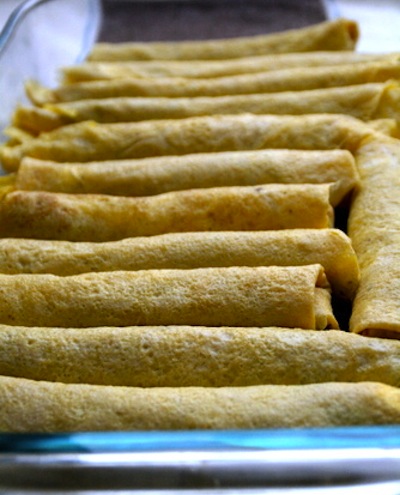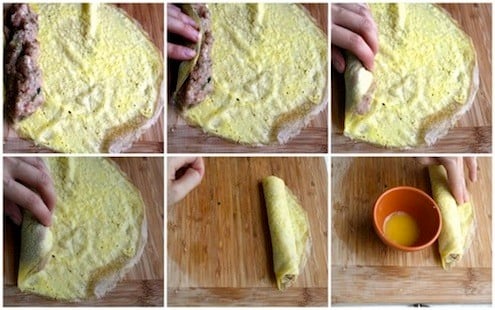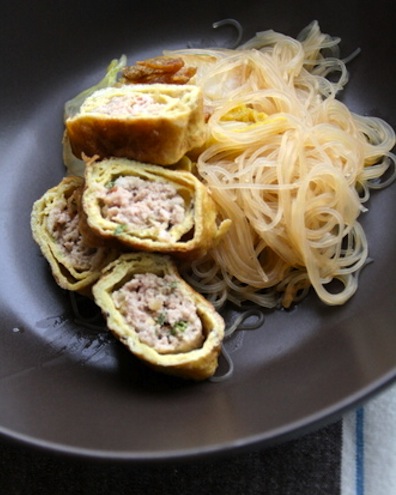As I mentioned before, I was recently living at my parents’ house for two months. I asked them when it would ever be inappropriate for me to go “home” and live with them, rent-free, with meals included. Luckily for me, they answered,
“never.”
So until I’m too old to do so, I’m going to be doing things like going back home to my parents’ house when I’m sick and using their Vitamix to make tofu.
My friend Sarah from RecipeRelay first started me thinking of homemade tofu, when she created her own batch last year. As much as I eat the stuff, I never really considered it possible to try making it at home. In the U.S., it’s so commercially sold that we often forget it’s meant to be eaten fresh and hand-made. So with Sarah breaking it down and providing a link to a step-by-step recipe I could follow, I was super inspired. But the task was still a bit daunting, and with tofu so cheap at the markets in China (as little as 10cents for a small block!), I never had the urge to try it myself in my own kitchen.
That, and I lacked a Cuisinart or Vitamix to blend the soybeans- a crucial step in the process for making tofu.
So with a few extra hours on my hands (and an article on tofu due the next day), I spent an afternoon at the home of my parents, taking advantage of an industrial-strength blender, experimenting with soybeans.
I did plenty of reading prep beforehand. When DIY’ing in the kitchen- whether it be for marshmallows, ice cream sandwiches, pop tarts, fig newtons, or granola bars– I definitely recommend doing your research and reading through a few different recipes before rolling up your sleeves. In my case, I read and re-read Sarah’s experience, which directed me towards this website and very helpful recipe. Given my time and resources (which was a lot and many, respectively), I was also able to make a trip to the local library where I sat in the cookbook aisle for an hour and skimmed a few books about soy and tofu
With my tofu research session finished, I finally understood the very basic process that produced tofu: a product of fresh soy milk, separated into curds and whey, and then pressed. The magic ingredient that would produce curds in the “milk” of the soybean extract was called the coagulant, a crucial part of all tofu-making processes. The coagulant used in traditional tofu making is a Japanese ingredient called nigari, a concentration of various salts that remain after the crystallisation of salts extracted from seawater. While visiting the neighborhood Japanese supermarket one afternoon I peeked in the salts and dashi aisle, and became overwhelmed at the selection of salts and powders, none of which were labeled in English. Luckily as an alternative to nigari, Epsom salts (magnesium sulphate), fresh lemon juice, or apple cider vinegar can also be used to produce the same curdling effects. The variations in the results are seen mainly in the texture of the tofu, and only slightly affect the taste. I decided to use some apple cider vinegar that was already in the pantry.
I procured a pound of organic soybeans from the bulk grains aisle of Whole Foods to start my tofu-making adventure. After soaking the beans overnight and waking to their plump soybean glory the next morning, I got busy boiling, grinding, cooking and straining the soybeans. Fresh soy milk, as easy as that.
Pressing forward, I followed instructions carefully and put my soy milk back on the stove, adding the coagulant (in my case, apple cider vinegar), and stirring as advised. As expected, a pot full of steaming soy milk soon separated into small curds and whey. Little Miss Muffet, you’d be proud!
The curds were spooned into my own homemade tofu press – a rectangular plastic Tupperware container with holes punched throughout the bottoms and sides, lined with cheesecloth. With the curds weighted down with a bevy of canned ingredients, I let time do its job.
A short and surprising 15 minutes later, I checked on my result. There it was: the curds had compacted into one small rectangular form. Homemade tofu, firmer than I had imagined, smaller than I would have liked, and a far more crumbly than I would have preferred, but nevertheless it was tofu!

























